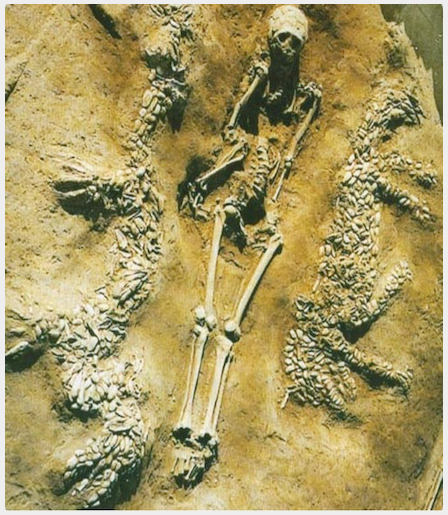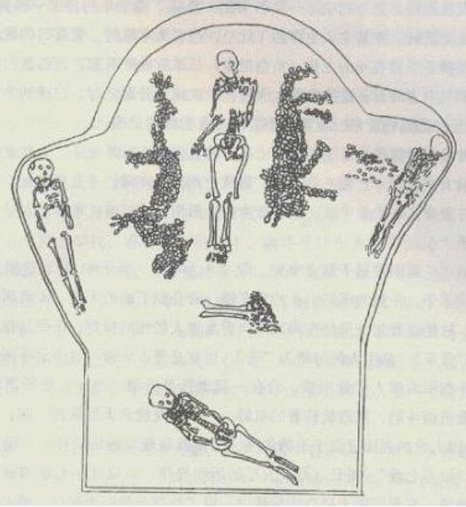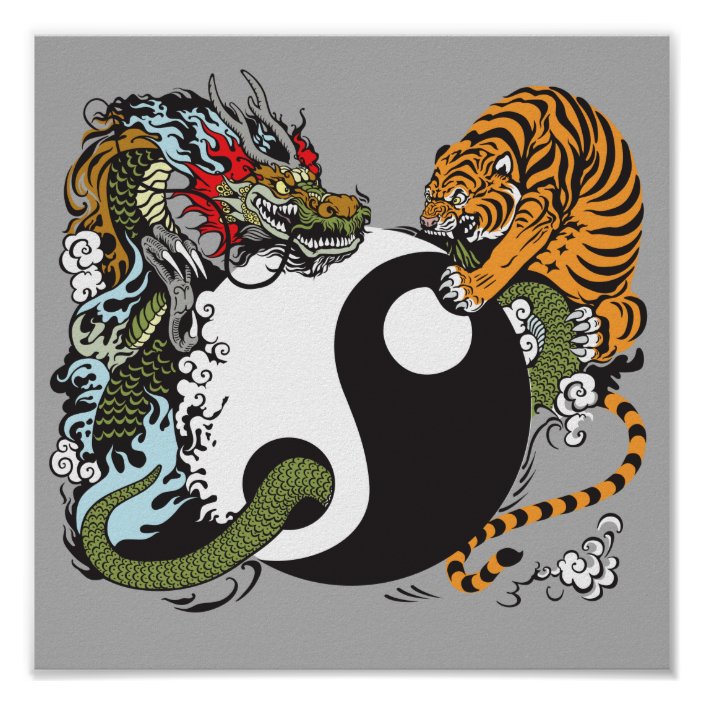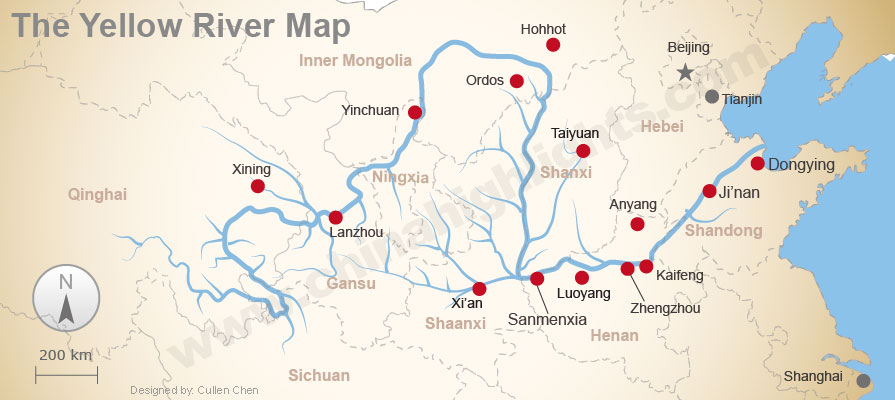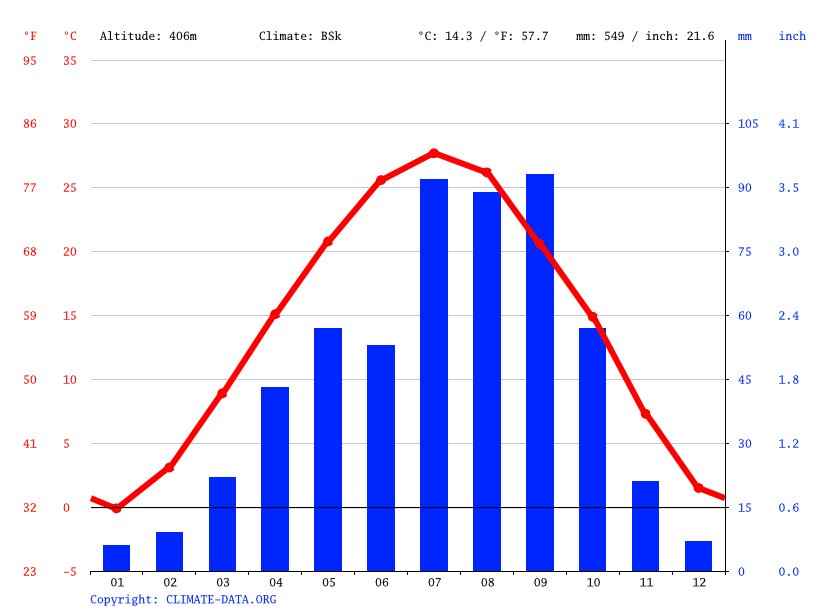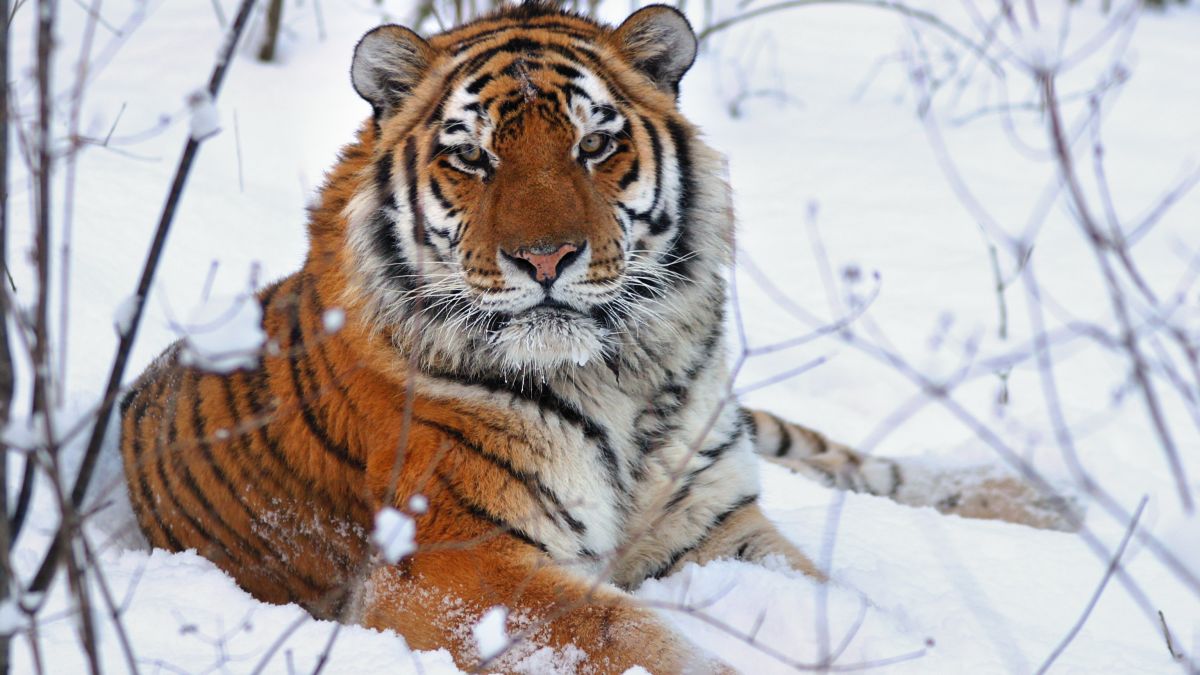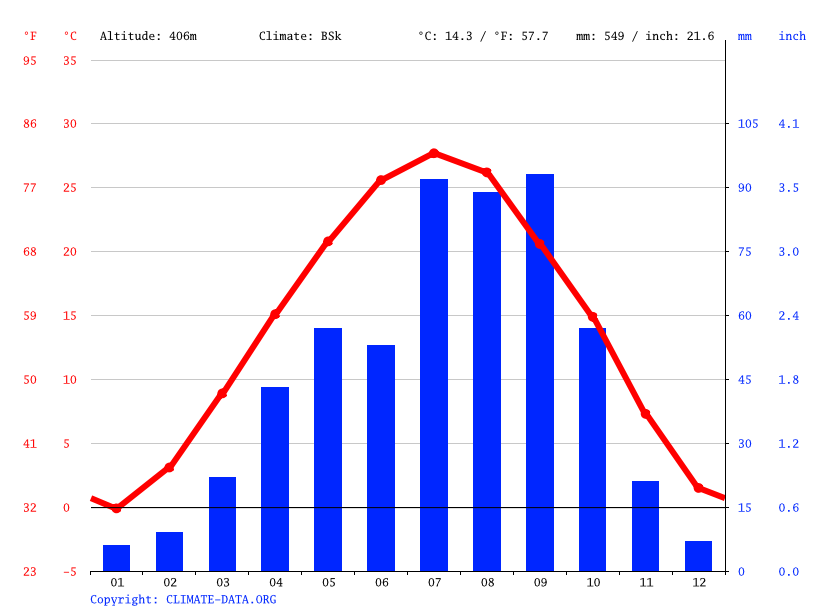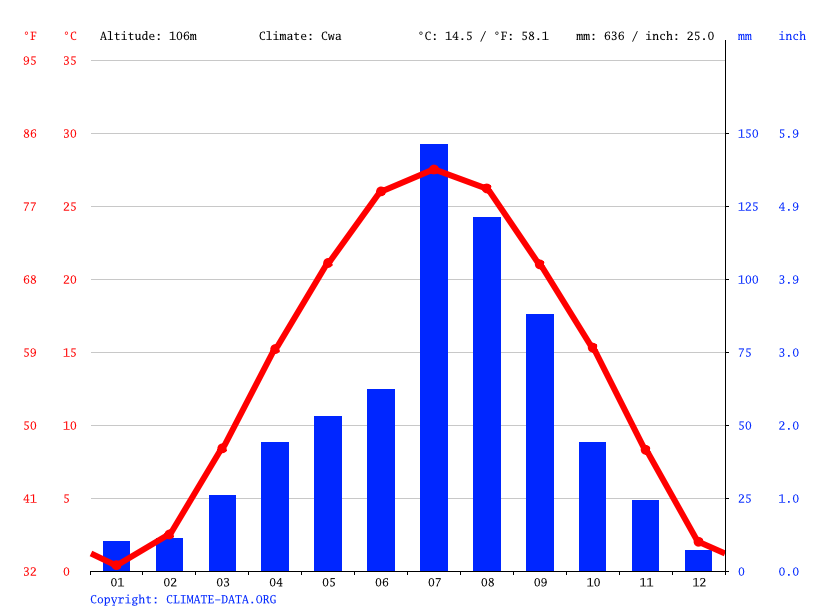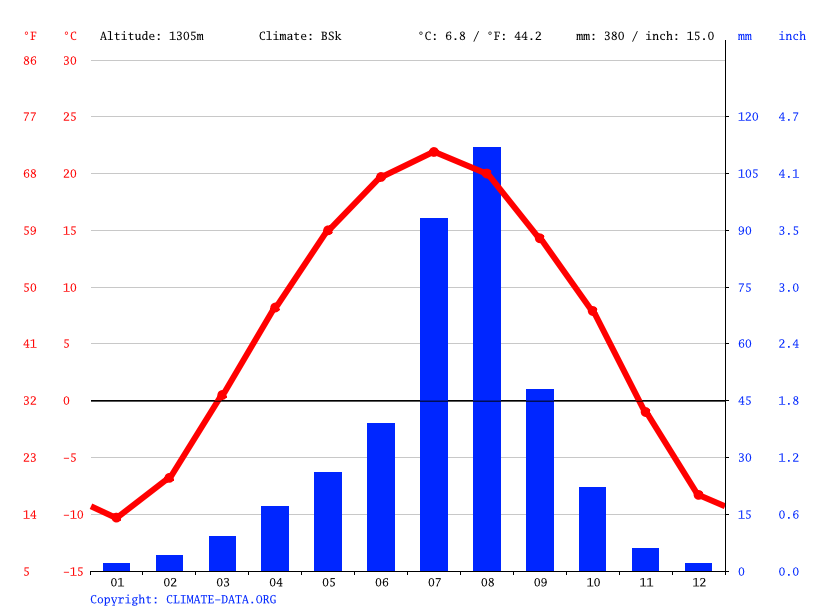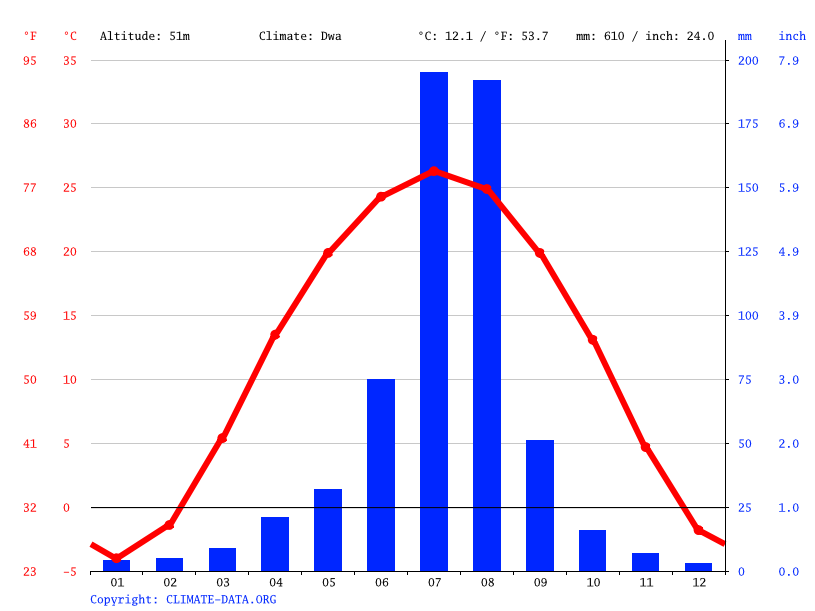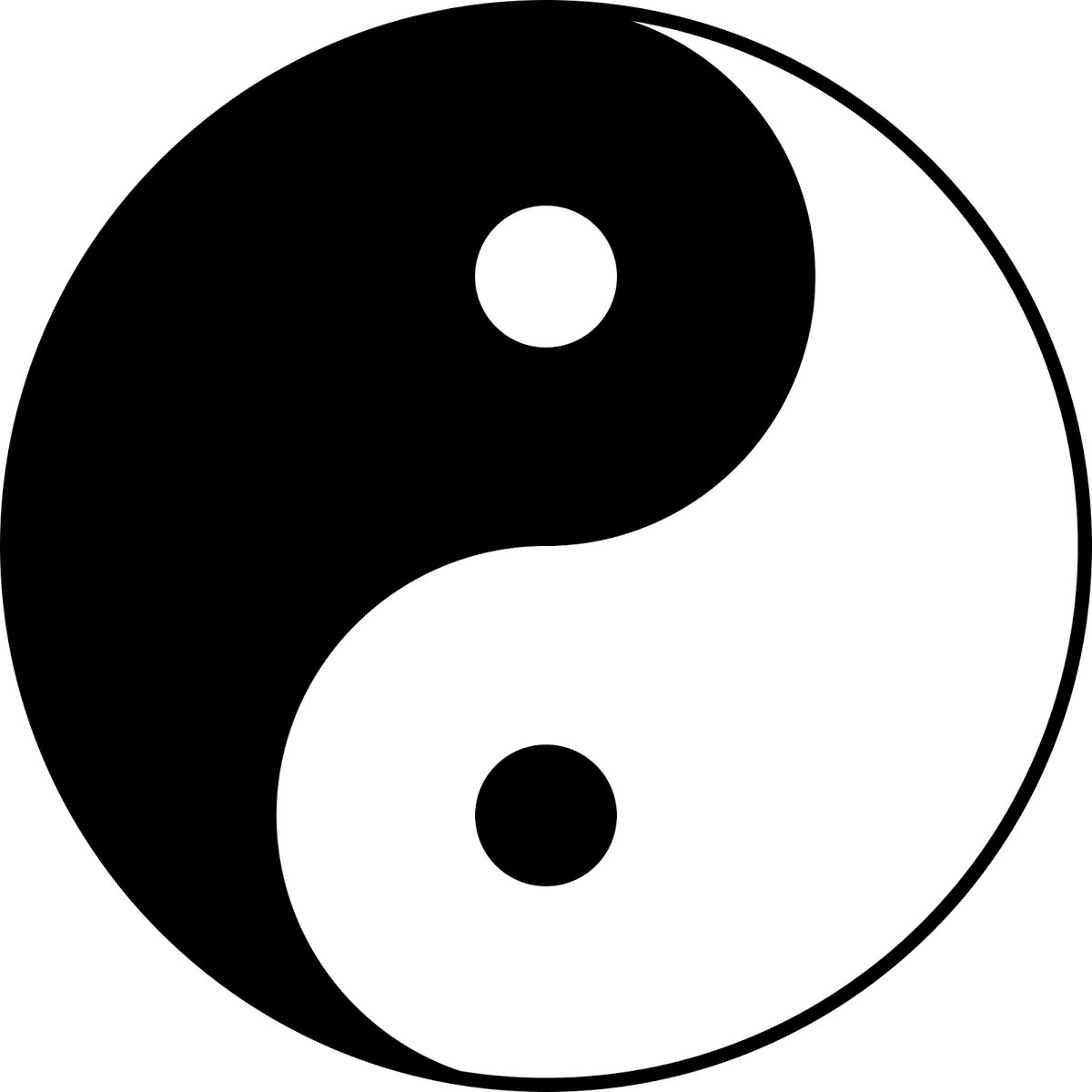Thread: This is one of the most amazing things I have seen...Neolithic https://en.wikipedia.org/wiki/Yangshao_culture burial, discovered in Puyang, Henan Province, Northwestern China and dated to 4000BC...
A person was buried between a dragon (on the east side) and tiger (on the west side) of the body made of clam shells...His body was surrounded by three other smaller bodies, probably sacrificial victims...
Dragon and Tiger are two most important symbols in Chinese culture.
The Tiger is the ruler of the earth, in contrast to the Dragon who is the ruler of the sky...
The Dragon, a symbol of Spring, stands for the East while the Tiger, a symbol of Autumn, rules the West...
The Tiger is the ruler of the earth, in contrast to the Dragon who is the ruler of the sky...
The Dragon, a symbol of Spring, stands for the East while the Tiger, a symbol of Autumn, rules the West...
The Tiger is Yin, Dark, Female while Dragon is Yang, Light, Male. In feng shui, the dragon vs tiger power struggle has one ultimate goal, the balancing of these two opposing powers...
And we find them depicted as opposites, Dragon in the east and Tiger in the west in a 4000BC tomb...6000 years of unbroken cultural tradition in Northeastern China...
But why are tiger and dragon seen as opposite and why is Dragon = Yang, Hot, Light, Up, Sky, East, Spring and why is Tiger = Yin, Cold, Dark, Down, Earth, West?
Climate and the behavior of animals and how it fits into the climatic year. Again...This is the map of the distribution of the https://en.wikipedia.org/wiki/Yangshao_culture
The main cultural center of the Yangshao culture, Banpo, is located near today's Xian. And here is the chart of the climatic year in the Northeastern China, Xian region...
In my yesterday's thread about Chinese Dragons, I explained why Chinese dragon, just like every other dragon, is the symbol of the hottest part of the year, Jul/Aug. As well as the symbol of the whole warm period of the year... https://twitter.com/serbiaireland/status/1351975540215963651
This is because dragons are "old snakes ", and snakes are solar animals which are out during the sunny, hot part of the year...This is consistent with Dragon's association with Yang...And with its association with spring, the time when heat and brighness starts to increase...
What about the Tiger? In Chinese texts we read that tiger is the symbol of autumn because "tigers come down from the mountains in the late autumn and get near villages"...That would quickly create "when tigers come down from the mountains time of the year" calendar marker. Right?
I actually believe that originally tiger was the symbol of the whole cold part of the year...And particularly the coldest part of the year, Jan/Feb...
The tiger we are talking about here is the Amur (Siberian) tiger which is the type of tiger that used to live in Northeastern China...
And Amur (Siberian) tigers mating season is December to January. At the end of winter, right in the middle of the Yin part of the year, the coldest part of the year...Which is why they became symbol (calendar marker) for winter... http://oldeuropeanculture.blogspot.com/2020/06/leopard.html
And animal calendar markers are made from the annual animal behavior, like mating...Tigers mate every year during its coldest part. Hence the coldest part of the year = tiger part of the year...
This is consistent with Dragon's association with Yin. And its association with autumn, when cold and darkness start to incease...
Now here is the interesting bit  You know how Chinese Yin-Yang symbol has "Yin in maximum Yang and Yang in maximum Yin"?
You know how Chinese Yin-Yang symbol has "Yin in maximum Yang and Yang in maximum Yin"?
The full Yin = Cold, Dark, Wet = Winter (Nov-Apr)
The full Yang = Hot, Bright, Dry = Summer (May-Oct)
 You know how Chinese Yin-Yang symbol has "Yin in maximum Yang and Yang in maximum Yin"?
You know how Chinese Yin-Yang symbol has "Yin in maximum Yang and Yang in maximum Yin"? The full Yin = Cold, Dark, Wet = Winter (Nov-Apr)
The full Yang = Hot, Bright, Dry = Summer (May-Oct)
The full Yin and full Yang are found for instance in Mesopotamia...This is the climatic year for Baghdad. The hottest, brightest part of the year is also the driest. The full Yang. And the coolest, darkest part of the year is also the wettest. The full Yin...
But in Northeastern China, the the most Yang part, end of August, is also the wettest part of the year (Yin). Xian, Zhengzhou, Ordos, Beijing...All places in and around the Yangshao culture territory...
And so the most Yin part (Dark, Cold), Jan/Feb, is also the driest part of the year (Yang). And the most Yang part (Bright, Hot), Jul/Aug, is also the wettest part of the year (Yin). So indeed, "the maximum Yang contains Yin and the maximum Yin contains Yang"...
This is kind of cool. Not just because it shows the cultural continuity in China since Neolithic. But also because it shows that the same animals calendar markers, found everywhere in Eurasia and North Africa, were used in China since Neolithic too with the same meaning...
And because, through the use of animal calendar markers, we can explain the most important aspects of these two "mythical animals"...
One more "mystery" solved...
One more "mystery" solved...
Those interested in animal calendar markers from across Eurasia and North Africa from Neolithic onward
https://oldeuropeanculture.blogspot.com/p/animal-solar-year-markers.html
https://oldeuropeanculture.blogspot.com/p/animal-solar-year-markers.html

 Read on Twitter
Read on Twitter